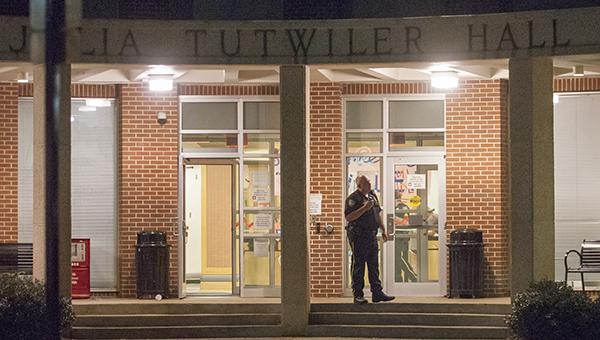A public information officer generally serves as a media contact within certain government organizations, providing information among other things.
Douglas Klutz, a professor in the department of criminal justice, said a PIO can help communication travel through police departments to the media or public.
“Generally, a public information officer serves as a bridge of communication between a law enforcement agency/department and the public,” he said. “Their primary role is to facilitate effective communications with the media or public.”
Cathy Andreen, the director of media relations for the University, said her office serves in the place for a PIO for UAPD.
Media organizations are unable to directly contact UAPD. Instead, inquiries regarding any action UAPD takes such as arrests must be sent through the Office of Media Relations first. If UAPD were to utilize a public information officer, UA media relations would no longer act as a middleman for UAPD. This would allow for an expert official, such as a PIO, to provide the same information.
Klutz said police departments can benefit from having a PIO.
“I think all law enforcement departments can benefit from having a specific point of contact in the PIO role if used effectively,” he said. “PIOs can help regulate and control the dissemination of information should a crisis or emergency situation arise. Misinformation tends to spread quickly in these types of situations, and having a point of contact to ensure factual information is disseminated is important.”
The Tuscaloosa Police Department currently utilizes a public information officer. Sergeant Brent Blankley is responsible for keeping the public and the media informed and acts as a direct point of contact for TPD.
“TPD utilizes a PIO position because we feel it gives the best possible service to the public and the media by having a designated point of information contact,” he said. “However, every department and its needs are different.”
In addition to an absence of a public information officer, UAPD lacks a role to focus on social media, which can be an effective form of communication especially in an emergency situation.
During the fall semester, an anonymous threat was made by a YouTube user under the name of “Authur Pendragon.” During the incident, rumors spread quickly on social media across campus, causing the public to be misinformed.
“If used effectively, social media provides a great medium to quickly and efficiently disseminate information for public consumption,” Klutz said. “This is especially the case with the younger-aged cohorts at a university setting where social media is extremely popular.”
In contrast to UAPD, other University police departments across the South use social media and have rules similar to a public information officer.
The University of Georgia’s police department is actively involved on social media with accounts on Twitter and Facebook, separate from their media relations department. In addition, UGA police interact directly with the media in handling public information requests.
Jimmy Williamson, UGA chief of police, told The Crimson White in a 2013 interview that he deals with all media requests himself.
“We’ve found bureaucracy slows it down and makes y’all [the media] search more,” he said. “I want to be as transparent as humanly possible, that way they don’t feel like they’re keeping something from someone.”
Tom Jackson, vice president for public affairs for the University of Georgia, said the police chief can do a better job of talking about the department than he could.
Andreen said there are no current plans to create a new position.









